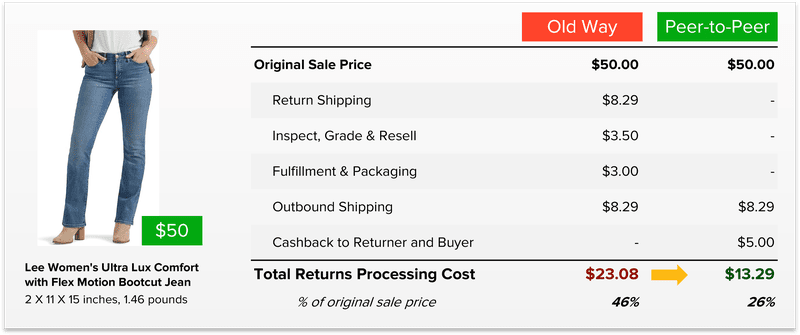Ultimate Guide to Warehouse Management: Processes, Challenges, and Solutions

Last updated on April 02, 2025

In this article
 16 minutes
16 minutes
Warehouse management controls the storage and movement of goods. This guide covers key processes, challenges, and solutions to improve efficiency.
Key Takeaways
- Warehouse management is crucial for efficient storage, inventory control, order fulfillment, and shipping, ensuring smooth supply chain operations.
- Key processes like receiving, inventory control, order picking, and shipping significantly impact warehouse efficiency and customer satisfaction.
- Implementing technology like Warehouse Management Systems (WMS) and automation tools enhances efficiency, reduces costs, and improves inventory visibility.
What is Warehouse Management?
Warehouse management refers to the strategic point in supply chain management that ensures the efficient storage and distribution of goods, which is essential for timely and cost-effective delivery to intended recipients. Imagine a well-oiled machine where every cog works in perfect harmony; that’s what effective warehouse management aims to achieve. It involves orchestrating a series of complex processes and decision-making to ensure smooth operations.
At its core, warehouse management encompasses a variety of activities, including inventory control, order fulfillment, and shipping processes. These tasks are crucial for maintaining optimal inventory levels, ensuring that products are always available when needed, and keeping customers satisfied. A proficient warehouse manager focuses on inventory management, operations, organization, order picking, labor management, and shipping coordination. Each of these elements plays a vital role in the overall efficiency and effectiveness of a warehouse.
The primary purpose of warehouse management is to monitor goods and products efficiently. This involves tracking inventory from the moment it arrives at the warehouse to the point it leaves for delivery. The first step in this intricate dance is receiving inventory or freight. This initial phase sets the tone for the entire warehousing process, making it crucial to handle it with precision.
In a nutshell, warehouse management is all about maintaining order amidst chaos. Creating a seamless flow of products through the supply chain ensures every item is accounted for and every customer is satisfied. With this foundation in place, let’s explore the key processes that make up effective warehouse management.
Key Processes in Warehouse Management
Efficient processes are the backbone of smooth operations and high customer satisfaction. These processes ensure that every step, from receiving goods to shipping them out, is handled with precision and care. Managing inventory across various sales channels can complicate inventory tracking and fulfillment, leading to issues such as overselling or stockouts. Addressing these challenges requires a deep understanding of the key warehouse management processes involved in warehouse management.
Receiving, inventory control, order fulfillment, and shipping are the fundamental warehouse processes that keep a warehouse operation running efficiently. Each of these steps plays a crucial role in ensuring that products are stored correctly, orders are picked accurately, and shipments are delivered on time. Seasonal demand fluctuations can pose additional challenges, causing warehousing operations to struggle with scaling operations effectively.
Regularly reviewing SKU movement speeds and storing high-demand items in accessible locations enhances order fulfillment efficiency. Encouraging regular team meetings and utilizing collaboration tools can also enhance awareness of inventory levels and order status. With a solid understanding of these processes, let’s delve deeper into each one, starting with receiving and put-away.
Receiving and Put-away
The receiving process is the first critical step in the warehouse management process. It involves counting the units, inspecting their condition, and documenting the receipt of the inventory. This is a foundational step as it sets the stage for accurate inventory tracking and efficient warehouse operations from the very beginning. Utilizing cloud-integrated software systems during the receiving process can provide better visibility and real-time tracking of inventory, ensuring that nothing slips through the cracks.
Automation in the receiving process significantly improves efficiency by allowing bulk actions, reducing the time and effort required to handle large volumes of inventory. Once the inventory is received, the next step is the put-away process, which involves transporting the inventory from the receiving area to its designated storage location. This process ensures that the inventory is stored in an organized manner, making it easy to locate and retrieve items when needed.
Choosing an effective put-away strategy should take into account factors like inventory type and available space. Considering these factors helps warehouse managers optimize storage space and streamline processes, leading to more efficient operations. With the inventory properly stored, we can now explore various inventory storage techniques.
Inventory Storage Techniques
One of the most strategic decisions in warehouse management is inventory storage. Proper inventory storage not only maximizes warehouse space but also ensures that products are easily accessible when needed. When choosing a put-away strategy, factors such as the type, volume, and variety of inventory, as well as the available space and storage options, should be considered.
Bins and totes keep products organized while maximizing available space. This method allows for better inventory control and reduces the time needed to locate items. Implementing systems that allow for automated storage can greatly enhance storage density and efficiency, making it easier to manage large volumes of inventory.
Adopting these techniques ensures warehouse operations remain smooth and efficient. With inventory properly stored, the next step in the warehouse management process is order picking and packing.
Order Picking and Packing
Order picking and packing are critical components of the warehouse management process. Various picking strategies can be employed to enhance efficiency, such as batch picking, which allows one picker to fulfill multiple orders simultaneously, and zone picking, where inventory items regularly picked together are stored in specific zones for quicker access.
Another strategy is wave picking, where pickers collect items at specific times, completing other tasks during downtime, and discrete picking, where items are picked in the most efficient order based on a list. The goal of effective picking, packing, and shipping is to ensure accurate and fast shipments, enhancing the overall customer experience to create repeat purchase opportunities.
Properly maintained packing areas are crucial for efficient order fulfillment and warehouse efficiency. Consolidating packing materials, such as using one type for fragile items and another for filling space, enhances packing efficiency. Additionally, limiting the number of box sizes available for packing helps speed up the packing process. The trick is to identify the most commonly used shipping supplies that don’t accidentally bump a shipment up into dimensional weight unnecessarily, or the shipping cost will increase unnecessarily.
Shipping and Delivery
Shipping and delivery are the final steps in the warehouse management process, and they play a crucial role in ensuring customer satisfaction. Warehouse systems provide integration with transport management, automatic bills, packing lists, invoices, and shipment notifications to streamline the shipping process. Best-in-class warehouse operations ensure that the majority of shipments leave on time, demonstrating effective shipping process management.
Common shipping carriers utilized include USPS, FedEx, and UPS, which facilitate timely deliveries from the warehouse, and also DHL which is reliable, though somewhat slower than the former list of carriers. Efficient packaging helps streamline the shipping process, allowing for quicker movements of items and reducing delays. Real-time tracking capabilities enhance customer satisfaction by providing accurate updates on shipment statuses and ensuring transparency in the shipping process.
A warehouse management system should automatically send order tracking information to the store, improving customer communication. With efficient shipping and delivery processes in place, warehouses can ensure timely product delivery and meet customer expectations. Now, let’s explore the benefits of effective warehouse management.
Benefits of Effective Warehouse Management
Effective warehouse management offers numerous benefits that can significantly impact a business’s bottom line. Automating tasks within warehouse operations through a warehouse management system (WMS) can enhance accuracy and speed, leading to better overall customer satisfaction and lower costs related to human error.
An efficiently integrated warehousing network can improve customer service by reducing lead times due to better inventory management. Order tracking software improves the shipping process and enhances customer satisfaction, making customers happier. Additionally, cross-docking in warehousing allows for the direct transfer of goods from inbound to outbound transportation, minimizing storage time and costs.
Using third-party logistics (3PL) in warehouse management can result in significant cost savings, from more efficient handling and operations. Effective warehousing can also help businesses manage risks associated with inventory, such as damage, theft, or disruptions in supply chain flow. With these benefits in mind, it’s clear that proper warehouse management is necessary for business success.
However, managing multiple warehouses presents its own set of challenges.
Challenges in Managing Multiple Warehouses
Managing multiple warehouses presents significant challenges, including inventory coordination, order routing, logistics costs, demand forecasting, and maintaining accurate records across different locations. Managers may lack the necessary visibility into inventory levels and operations across all locations, leading to inefficiencies and fulfillment delays and mistakes. Additionally, operating multiple warehouses can lead to higher fixed asset and labor costs.
Warehouses in different regions face geographic and regulatory challenges that can complicate operations. Common challenges include balancing inventory, coordinating logistics, ensuring consistent communication, managing workforce productivity, controlling costs, and maintaining security. These challenges highlight the need for effective strategies to manage multiple warehouses successfully.
To overcome these challenges, companies must adopt strategies that enhance visibility, coordination, and efficiency across all warehouse locations. Let’s explore some of these strategies in the next section.
Strategies for Successful Multi-Warehouse Management
Rapid technological advancements necessitate ongoing training and integration efforts, as failure to adopt new technologies can impede competitiveness. Companies must recruit and hire the right management team to ensure cohesive operations and adherence to Standard Operating Procedures (SOPs). Evaluating the use of 3PLs such as Cahoot can reduce startup investment while also shortening the schedule for new warehouse operations to get onboarded and up to speed.
Ensuring the right amount of stock is distributed to each warehouse to meet regional demand without overstocking or understocking is a challenge. Maintaining accurate inventory records across multiple locations can be difficult, leading to discrepancies and distribution errors. Sellers need strategies that can help them manage multiple warehouses more effectively and efficiently.
Now, let’s take a closer look at one of the most important strategies: implementing a Warehouse Management System (WMS).
Implementing a Warehouse Management System (WMS)
Utilizing a warehouse management system (WMS) can significantly lower operating costs by optimizing warehouse space and processes. A well-implemented WMS improves shipment management, leading to faster order processing, shipping cost optimization, and more reliable delivery schedules. This system ensures that warehouse operations are streamlined and efficient, making it easier to handle large volumes of inventory in shorter periods of time.
Warehouse management solutions enhance labor efficiency by matching tasks with employee skills and reducing unnecessary movement. This not only improves overall productivity but also ensures that warehouse employees are utilized effectively. Key features of a WMS include streamlining receiving, put-away, picking, packing, shipping, and inventory tracking. Real-time inventory visibility and staff productivity tracking are essential components of an effective WMS, allowing companies to effectively monitor and control daily operations and ensure smooth and efficient warehouse functions.
With a WMS in place, let’s now explore the importance of balancing inventory levels.
Balancing Inventory Levels
Effective warehouse management enhances real-time visibility of inventory, which helps in accurately forecasting demand and preventing stockouts. Maintaining optimal inventory levels across multiple warehouses is crucial to avoiding disruptions and increased holding costs. Traceability of materials is improved through advanced features such as lot and serial number tracking, facilitating better inventory planning and management.
Accurately predicting demand across multiple locations can be challenging. Overstocking in one warehouse while understocking in another can lead to disruptions and increased holding costs. To mitigate these challenges, companies must implement robust inventory management practices that ensure the right amount of stock is distributed to each warehouse.
Balancing inventory levels is essential for maintaining efficient warehouse operations. Leveraging real-time data and advanced WMS features ensures warehouses are well-stocked and ready to meet demand. Effective communication and coordination are also essential for successful multi-warehouse management, as we’ll explore next.
Enhancing Communication and Coordination
Live data sharing provides updates on purchase orders without needing to contact purchasing departments, enhancing communication and coordination between warehouses and their vendors. This approach boosts motivation and provides insight into employees’ work, contributing to better operational efficiency. Ensuring clear and consistent communication between different warehouses and departments is crucial for minimizing errors and improving workflow.
Effective communication helps in coordinating operations, reducing errors, and improving overall efficiency in warehouse management. Live data sharing and collaboration tools enhance awareness of inventory levels and order status, making warehouse management of multiple sites easier.
By prioritizing communication and coordination, companies can ensure that their warehouse operations run smoothly and efficiently. With these strategies in place, let’s now turn our attention to the role of technology and automation in warehousing.
Technology and Automation in Warehousing
Warehouse automation plays a critical role in removing friction from workflows. The primary goal of warehouse automation is to relieve workers of repetitive tasks, allowing them to focus on more complex operations. This shift not only improves operational accuracy but also boosts overall productivity by minimizing the likelihood of human errors in various warehouse processes where fatigue can be a big issue.
Modern warehousing increasingly uses advanced technologies like robotics and AI to streamline operations and reduce labor costs. These technologies enhance the speed and accuracy of warehouse operations, ensuring that orders are processed and fulfilled efficiently. Integrating these technologies helps warehouses achieve higher efficiency and accuracy.
With a solid understanding of the importance of technology and automation, let’s dive deeper into specific warehouse automation tools that are transforming the industry.
Warehouse Automation Tools
Receiving automation with Automated Guided Vehicles (AGVs) increases efficiency by allowing bulk receiving actions, reducing the time and effort required to handle large volumes of inventory. Augmented Reality (AR) smart glasses enable operators to carry out tasks without using their hands, enhancing productivity in AGV operations. Warehouse robots rely on AI, machine learning, video, audio, thermal, and haptic sensors for decision-making, increasing the speed of operations and enabling faster processing of orders.
Goods-to-person systems significantly enhance picking speed and reduce congestion by having robots move full shelves of goods to humans ready for final pick/pack, leading to more efficient workflows. Voice-directed warehousing utilizing speech recognition increases productivity by allowing pickers to focus on tasks without handheld devices. Operators communicate during voice picking using everyday language to send real-time updates, improving accuracy and speed.
The implementation of a warehouse management system (WMS) allows for all these ongoing improvements in processes, as well as seamless adapting to new technologies and methods. Automation streamlines data collection, barcoding, scanning, picking, packing, shipping, and inventory tracking, enhancing overall efficiency in warehouse management. With these tools in place, let’s explore the role of inventory management software in modern warehousing.
Inventory Management Software
Warehouse management software offers immediate visibility of inventory at various locations. This includes tracking items that are currently in transit, delivered, etc. Real-time data on shipping, inventory accuracy, distribution costs, and order cycle time can be collected through a Warehouse Management System, improving overall warehouse efficiency. Companies can adjust inventory levels on the fly to meet customer demand using warehouse management software.
Regular cycle counting secures inventory accuracy, identifies discrepancies, and organizes inventory to ensure damaged or missing units are identified early and often. During cycle counting, additional tasks like ABC analysis and warehouse cleaning can be performed, ensuring that the warehouse remains organized and efficient.
Augmented reality applications in warehouses can be used to map out routes. Automatic identification and data capture technology, such as barcodes and RFID, is used by warehouse management software to ensure accurate inventory tracking and management.
With a solid understanding of inventory management software, let’s explore the integration of AI and IoT in warehousing.
AI and IoT Integration
Using demand forecasting and shipment distribution data helps maintain optimal inventory levels across warehouses, ensuring that stock is available when and where it’s needed. IoT sensors can provide essential real-time data that AI analyzes to enhance operational efficiency in warehouses. This combination of AI and IoT technologies allows warehouses to proactively address issues before they affect operations, ensuring smooth and efficient warehouse management.
Integrating AI and IoT helps warehouses achieve higher efficiency and accuracy, making inventory management and meeting customer demand easier. With these advanced technologies in place, warehouses can stay ahead of the competition and ensure that their operations run smoothly.
Summary
In conclusion, effective warehouse management is crucial for ensuring smooth operations, high customer satisfaction, and cost savings, especially in a high-volume, high-performance environment. By understanding and implementing key processes such as receiving and put-away, inventory storage, order picking and packing, and shipping and delivery, warehouses can achieve operational excellence. The benefits of effective warehouse management include improved accuracy, speed, and customer service, as well as cost savings and risk management.
Managing multiple warehouses presents its own set of challenges, including inventory coordination, logistics costs, and maintaining accurate records. However, by adopting strategies such as implementing a Warehouse Management System (WMS), balancing inventory levels, and enhancing communication and coordination, companies can manage multiple warehouses effectively and efficiently. Alternatively, outsourcing distributed fulfillment to elastic warehouse networks like Cahoot can be the most cost effective way to quickly stand up new fulfillment centers to take advantage of the benefits of a multi-warehousing strategy, but without the high fixed asset and labor costs, nor the risks.
Technology and automation play a critical role in modern warehousing, with tools like AGVs, AR smart glasses, and voice-directed warehousing enhancing efficiency and accuracy. Inventory management software provides real-time visibility and data collection, while AI and IoT integration ensures optimal inventory levels and proactive issue resolution. By leveraging these advanced technologies, warehouses can stay ahead of the competition and ensure smooth operations.
Frequently Asked Questions
What is warehouse management?
Warehouse management is all about efficiently storing and distributing goods, ensuring that everything moves smoothly in the supply chain for timely and accurate delivery. It’s crucial for keeping costs down and maintaining customer satisfaction.
What are the key processes in warehouse management?
The key processes in warehouse management are receiving, inventory control, order fulfillment, and shipping. By mastering these, you can ensure products are stored right, orders are picked accurately, and shipments arrive on time.
What are the benefits of effective warehouse management?
Effective warehouse management boosts accuracy and speed, enhances customer service, and drives cost savings. This leads to smoother operations and happier customers overall.
What are the challenges in managing multiple warehouses?
Managing multiple warehouses can be tough due to issues like coordinating inventory, controlling logistics costs, and ensuring accurate records. Visibility challenges and geographic differences can also complicate operations.
How can technology and automation improve warehouse management?
Using technology and automation can drastically boost warehouse efficiency and accuracy. With tools like AGVs and inventory management software, you can expect real-time visibility and smarter inventory handling, making your warehouse operations run more smoothly.

Up to 64% Lower Returns Processing Cost


